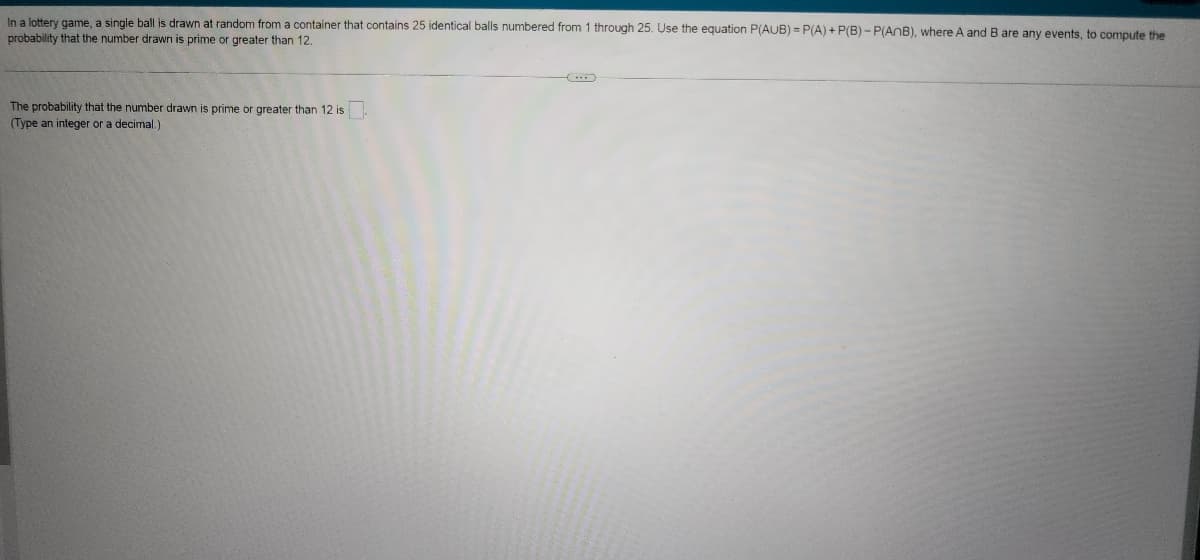In a lottery game, a single ball is drawn at random from a container that contains 25 identical balls numbered from 1 through 25. Use the equation P(AUB)=P(A) + P(B) - P(ANB), where A and B are any events, to compute the probability that the number drawn is prime or greater than 12. The probability that the number drawn is prime or greater than 12 is (Type an integer or a decimal.)
In a lottery game, a single ball is drawn at random from a container that contains 25 identical balls numbered from 1 through 25. Use the equation P(AUB)=P(A) + P(B) - P(ANB), where A and B are any events, to compute the probability that the number drawn is prime or greater than 12. The probability that the number drawn is prime or greater than 12 is (Type an integer or a decimal.)
Chapter8: Sequences, Series,and Probability
Section8.7: Probability
Problem 9ECP: A random number generator selects two integers from 1 to 30. What is the probability that both...
Related questions
Question
100%

Transcribed Image Text:In a lottery game, a single ball is drawn at random from a container that contains 25 identical balls numbered from 1 through 25. Use the equation P(AUB)=P(A) + P(B)- P(ANB), where A and B are any events, to compute the
probability that the number drawn is prime or greater than 12.
The probability that the number drawn is prime or greater than 12 is
(Type an integer or a decimal.)
(...)
Expert Solution
This question has been solved!
Explore an expertly crafted, step-by-step solution for a thorough understanding of key concepts.
This is a popular solution!
Trending now
This is a popular solution!
Step by step
Solved in 2 steps

Recommended textbooks for you


College Algebra (MindTap Course List)
Algebra
ISBN:
9781305652231
Author:
R. David Gustafson, Jeff Hughes
Publisher:
Cengage Learning


College Algebra (MindTap Course List)
Algebra
ISBN:
9781305652231
Author:
R. David Gustafson, Jeff Hughes
Publisher:
Cengage Learning